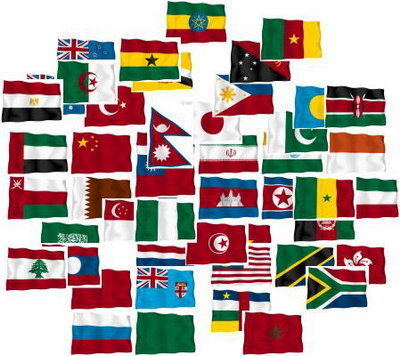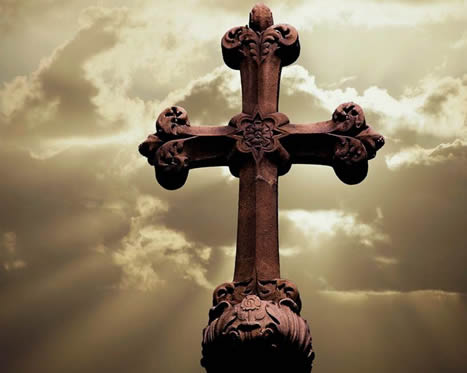
AS Pope Francis prepares to consecrate his papacy to Our Lady of Fatima on May 13th, 2013 through Cardinal José da Cruz Policarpo, Archbishop of Lisbon, [1]Correction: The consecration is to happen through the Cardinal, not the Pope in person himself at Fatima, as I mistakenly reported. it is timely to reflect on the Blessed Mother’s promise made there in 1917, what it means, and how it will unfold… something that seems more and more likely to be in our times. I believe his predecessor, Pope Benedict XVI, has shed some valuable light on what is coming upon the Church and the world in this regard…
In the end, my Immaculate Heart will triumph. The Holy Father will consecrate Russia to me, and she shall be converted, and a period of peace will be granted to the world. —www.vatican.va
BENEDICT, AND THE TRIUMPH
Pope Benedict prayed three years ago that God would “hasten the fulfillment of the prophecy of the triumph of the Immaculate Heart of Mary.” [2]Homily, Fatima, Portugal, May 13th, 2010 He qualified this statement in an interview with Peter Seewald:
I said the “triumph” will draw closer. This is equivalent in meaning to our praying for the coming of God’s Kingdom. This statement was not intended—I may be too rationalistic for
that—to express any expectation on my part that there is going to be a huge turnaround and that history will suddenly take a totally different course. The point was rather that the power of evil is restrained again and again, that again and again the power of God himself is shown in the Mother’s power and keeps it alive. The Church is always called upon to do what God asked of Abraham, which is to see to it that there are enough righteous men to repress evil and destruction. I understood my words as a prayer that the energies of the good might regain their vigor. So you could say the triumph of God, the triumph of Mary, are quiet, they are real nonetheless. —Light of the World, p. 166, A Conversation With Peter Seewald
Here, the Holy Father says that the “triumph” is equivalent to “praying for the coming of God’s Kingdom.”
The Catholic Church, which is the kingdom of Christ on earth, [is] destined to be spread among all men and all nations… —POPE PIUS XI, Quas Primas, Encyclical, n. 12, Dec. 11th, 1925; cf. Matt 24:14
The Church “is the Reign of Christ already present in mystery.” —Catechism of the Catholic Church, n. 763
But then he goes on, noting his subjective opinion on the matter, that it will not produce a substantial “turnaround” in the course of the world. How does one reconcile these words with the promise of a “period of peace” that is intrinsically linked to the Triumph? Wouldn’t that be a substantial “turnaround”?
Although admitting his optimism is limited, the Holy Father also helps to dispel the notion that the coming “era of peace” or “sabbath-rest,” as the Church 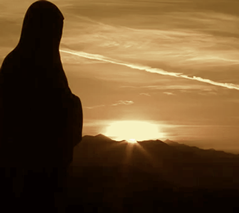 Fathers called it, is akin to Our Lady waving a magic wand and everything becoming perfect. Indeed, let us cast away such fantasies, for they do smell of the heresy of millenarianism that has plagued the long history of the Church. [3]cf.Millenarianism — What it is, and What it Isn’t In harmony with the early Church Fathers, however, he makes a critical point—that the Triumph will see to it that “the power of evil is restrained again,” and that “the energies of the good might regain their vigor” and that, “the power of God himself is shown in the Mother’s power and keeps it alive.”
Fathers called it, is akin to Our Lady waving a magic wand and everything becoming perfect. Indeed, let us cast away such fantasies, for they do smell of the heresy of millenarianism that has plagued the long history of the Church. [3]cf.Millenarianism — What it is, and What it Isn’t In harmony with the early Church Fathers, however, he makes a critical point—that the Triumph will see to it that “the power of evil is restrained again,” and that “the energies of the good might regain their vigor” and that, “the power of God himself is shown in the Mother’s power and keeps it alive.”
On this universal level, if victory comes it will be brought by Mary. Christ will conquer through her because He wants the Church’s victories now and in the future to be linked to her… —POPE JOHN PAUL II, Crossing the Threshold of Hope, p. 221
I will put enmities between you and the woman, and your seed and her seed: she shall crush your head… (Genesis 3:15, Douay-Rheims)
…the prince of devils, who is the contriver of all evils, shall be bound with chains, and shall be imprisoned during the thousand years of the heavenly rule… —4th century Ecclesiastical writer, Lactantius, “The Divine Institutes”, The ante-Nicene Fathers, Vol 7, p. 21i; the early Church Fathers saw the “thousand year” period spoken of in Revelation 20 as a kind of “sabbath rest” or period of peace for the Church
While praying for the Triumph is also a prayer for the definitive coming of Jesus at the end of time, the Pope Emeritus sheds more light on this by turning to the words of St. Bernard that speak of an “intermediate coming” of the Kingdom before the end of time.
In his first coming Our Lord came in our flesh and in our weakness; in this middle coming he comes in spirit and power; in the final coming he will be seen in glory and majesty… —St. Bernard, Liturgy of the Hours, Vol I, p. 169
Pope Benedict extinguishes the argument of those who say that this 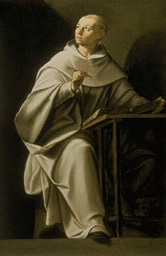 reflection of St. Bernard’s cannot refer to some intermediate coming of the Lord, such as an era of peace:
reflection of St. Bernard’s cannot refer to some intermediate coming of the Lord, such as an era of peace:
Whereas people had previously spoken only of a twofold coming of Christ—once in Bethlehem and again at the end of time—Saint Bernard of Clairvaux spoke of an adventus medius, an intermediate coming, thanks to which he periodically renews his intervention in history. I believe that Bernard’s distinction strikes just the right note. We cannot pin down when the world will end. Christ himself says that no one knows the hour, not even the Son. But we must always stand in the imminence of his coming, as it were—and we must be certain, especially in the midst of tribulations, that he is near. —POPE BENEDICT XVI, Light of the World, p.182-183, A Conversation With Peter Seewald
While rightly not restricting St. Bernard’s vision to solely a future event—for Jesus already come
s to us every day, [4]see Jesus is Here! Benedict, like his predecessors, foresaw a new era emerging before the end of time, calling the young to be “prophets of this new age.” [5]see What If….?
TRIUMPH OF THE CROSS
All of this, as I’ve mentioned before, is in perfect harmony with the early Church Fathers who foresaw our times culminating in the “lawless one” followed by a “sabbath rest” before the final conflagration. That is, the Passion of the Church is followed by a “resurrection” of sorts. [6]cf. Rev 20:6 Cardinal Ratzinger explained this in a rather powerful moment of prescience:
The Church will become small and will have to start afresh more or less from the beginning. She will no longer be able to inhabit many of the edifices she built in prosperity. As the number of her adherents diminishes… She will lose many of her social privileges… As a small society, [the Church] will make much bigger demands on the initiative of her individual members.
It will be hard-going for the Church, for the process of crystallization and clarification will cost her much valuable energy. It will make her poor and cause her to become the
Church of the meek… The process will be long and wearisome as was the road from the false progressivism on the eve of the French Revolution… But when the trial of this sifting is past, a great power will flow from a more spiritualized and simplified Church. Men in a totally planned world will find themselves unspeakably lonely. If they have completely lost sight of God, they will feel the whole horror of their poverty. Then they will discover the little flock of believers as something wholly new. They will discover it as a hope that is meant for them, an answer for which they have always been searching in secret.
And so it seems certain to me that the Church is facing very hard times. The real crisis has scarcely begun. We will have to count on terrific upheavals. But I am equally certain about what will remain at the end: not the Church of the political cult, which is dead already with Gobel, but the Church of faith. She may well no longer be the dominant social power to the extent that she was until recently; but she will enjoy a fresh blossoming and be seen as man’s home, where he will find life and hope beyond death. —Cardinal Joseph Ratzinger (POPE BENEDICT XVI), Faith and Future, Ignatius Press, 2009
Indeed, the Antichrist will have devastated much in the world (see footnote). [7]The chronology of the Church Fathers foresaw the “lawless one” emerge before the “era of peace,” while other Fathers, such as Bellarmine and Augustine, also foresaw a “last Antichrist.” This is consistent with St. John’s vision of the “beast and false prophet” before the “the thousand year reign”, and “Gog and Magog” afterward. Pope Benedict confirmed that the antichrist cannot be restricted to one individual, that he wears “many masks” cf (1 Jn 2:18; 4:3). This is part of the mystery of the “mystery of iniquity”: see The Last Two Eclipses We already see the first fruits of this destruction all around us, so much so, that Pope Benedict warned that “the very future of the world is at risk.” [8]cf. On The Eve; “…the foundations of the earth are threatened, but they are threatened by our behavior. The outer foundations are shaken because the inner foundations are shaken, the moral and religious foundations, the faith that leads to the right way of life. —POPE BENEDICT XVI, first session of the special synod on the Middle East, October 10th, 2010 The recovery will be “long and wearisome.” But it is precisely in this “poor and meek” state that the Church will be capable of receiving the gift of a “new Pentecost” and “a great power will flow from a more spiritualized and simplified Church.” As Fr. George Kosicki, a “father of Divine Mercy,” wrote:
The Church will increase the reign of the Divine Savior by returning to the Upper Room by way of Calvary! —The Spirit and the Bride say “Come!”, page 95
TRIUMPH OF THE SPIRIT
I was asked recently how I could possibly believe that an era of peace could come out of a world like ours. My answer, first of all, was that this is not my idea; it is not my vision, but that of the early Church 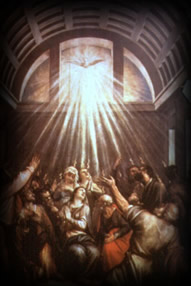 Fathers, clearly enunciated in the popes, [9]cf. The Popes, and the Dawning Era and reaffirmed in dozens of authentic mystics of the 20th century. [10]cf. Dear Holy Father… He is Coming! Second, the answer, indeed, is a supernatural one:
Fathers, clearly enunciated in the popes, [9]cf. The Popes, and the Dawning Era and reaffirmed in dozens of authentic mystics of the 20th century. [10]cf. Dear Holy Father… He is Coming! Second, the answer, indeed, is a supernatural one:
Not that Pentecost has ever ceased to be an actuality during the whole history of the Church, but so great are the needs and the perils of the present age, so vast the horizon of mankind drawn towards world coexistence and powerless to achieve it, that there is no salvation for it except in a new outpouring of the gift of God. —POPE PAUL VI, Gaudete in Domino, May 9th, 1975, Sect. VII; www.vatican.va
The Triumph, then, is already happening. The “new Pentecost” is already on its way. It has already begun in the “remnant” whom Our Mother has been quietly gathering for decades now around the world in the “upper room” of her heart. Just like Gideon’s army was small and quiet as they surrounded the enemies camp, [11]cf. The Hour of the Laity so too, “the triumph of God, the triumph of Mary, are quiet, they are real nonetheless.” [12]POPE BENEDICT XVI, Light of the World, p. 166, A Conversation With Peter Seewald Thus, what the popes are speaking of is not a “Disney-like” transformation of the Church and world but an “increase” in the Kingdom of God.
Divine Spirit, renew your wonders in this our age as in a new Pentecost, and grant that your Church, praying perseveringly and insistently with one heart and mind together with Mary, the Mother of Jesus, and guided by blessed Peter, may increase the reign of the Divine Savior, the reign of truth and justice, the reign of love and peace. Amen. —POPE JOHN XXIII, at convocation of Second Vatican Council, Humanae Salutis, December 25th, 1961
The word “increase” is translated from the Latin amplificet, which Fr. Kosicki notes “also carries with it the meaning of bringing to
fulfillment.” [13]The Spirit and the Bride say “Come!”, p. 92 Therefore, the Triumph is also a preparation of the Church that anticipates the definitive coming of the Kingdom of God at the end of time. This 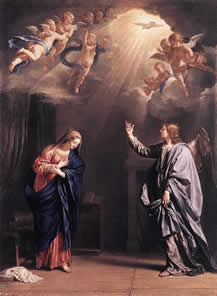 preparation is accomplished in part, as Cardinal Ratzinger noted, through the “crisis” that is here and coming upon the Church that will at once also purify her, making her docile, meek, and simple—in a word, like the Blessed Mother:
preparation is accomplished in part, as Cardinal Ratzinger noted, through the “crisis” that is here and coming upon the Church that will at once also purify her, making her docile, meek, and simple—in a word, like the Blessed Mother:
The Holy Spirit, finding his dear Spouse present again in souls, will come down into them with great power. He will fill them with his gifts, especially wisdom, by which they will produce wonders of grace… that age of Mary, when many souls, chosen by Mary and given her by the the most High God, will hide themselves completely in the depths of her soul, becoming living copies of her, loving and glorifying Jesus. —St. Louis de Montfort, True Devotion to the Blessed Virgin, n.217, Montfort Publications
TRIUMPH OF THE CHURCH
This Triumph, it seems then, is when the Church will “enjoy a fresh blossoming and be seen as man’s home.” [14]Cardinal Ratzinger, Faith and Future, Ignatius Press, 2009
Oh! when in every city and village the law of the Lord is faithfully observed, when respect is shown for sacred things, when the Sacraments are frequented, and the ordinances of Christian life fulfilled, there will certainly be no more need for us to labor further to see all things restored in Christ… All this, Venerable Brethren, We believe and expect with unshakable faith. —POPE PIUS X, E Supremi, Encyclical “On the Restoration of All Things”, n.14, 6-7
Thus, it is here where some prophetic revelations really begin to beat with the same heart as the Church. I will mention but two:
He is coming—not the end of the world, but the end of this century’s agony. This century is purifying, and after will come peace and love… The environment will be fresh and new, and we will be able to feel happy in our world and in the place where we live, without fights, without this feeling of tension in which all of us live… —Servant of God Maria Esperanza, The Bridge to Heaven: Interviews with Maria Esperanza of Betania, Michael H. Brown, p. 73, 69
[John Paul II] does indeed cherish a great expectation that the millennium of divisions will be followed by a millennium of unifications… that all the catastrophes of our century, all its tears, as the Pope says, will be caught up at the end and turned into a new beginning. —Cardinal Joseph Ratzinger (POPE BENEDICT XVI), Salt of the Earth, An Interview With Peter Seewald, p. 237
When the first buds appear on the trees, you reflect that winter is now coming to an end and that a new spring is near. I have pointed out to you  the signs of the cruel winter through which the Church is now passing, by way of a purification which has now reached its most painful peak… For the Church, a new spring of the triumph of my Immaculate Heart is about to burst forth. She will still be the very same Church, but renewed and enlightened, made humbler and stronger, poorer and more evangelical through her purification, so that in her the glorious reign of my Son Jesus may shine forth for all. —allegedly given by Our Lady to Fr. Stefano Gobbi, March 9th, 1979, n. 172, To the Priests, Our Lady’s Beloved Sons with ecclesiastical approval
the signs of the cruel winter through which the Church is now passing, by way of a purification which has now reached its most painful peak… For the Church, a new spring of the triumph of my Immaculate Heart is about to burst forth. She will still be the very same Church, but renewed and enlightened, made humbler and stronger, poorer and more evangelical through her purification, so that in her the glorious reign of my Son Jesus may shine forth for all. —allegedly given by Our Lady to Fr. Stefano Gobbi, March 9th, 1979, n. 172, To the Priests, Our Lady’s Beloved Sons with ecclesiastical approval
“As the third millennium of the Redemption draws near, God is preparing a great springtime for Christianity and we can already see its first signs.” May Mary, the Morning Star, help us to say with ever new ardor our “yes” to the Father’s plan for salvation that all nations and tongues may see his glory. —POPE JOHN PAUL II, Message for World Mission Sunday, n.9, October 24th, 1999; www.vatican.va
Can we not say that this simpler, humbler Church “of the Triumph” is already prefigured in the beautiful witness of Pope Francis, one of Mary’s “buds”?
RELATED READING:
Click here to Unsubscribe or Subscribe to this Journal.
——————–
Click below to translate this page into a different language:
Footnotes
| ↑1 | Correction: The consecration is to happen through the Cardinal, not the Pope in person himself at Fatima, as I mistakenly reported. |
|---|---|
| ↑2 | Homily, Fatima, Portugal, May 13th, 2010 |
| ↑3 | cf.Millenarianism — What it is, and What it Isn’t |
| ↑4 | see Jesus is Here! |
| ↑5 | see What If….? |
| ↑6 | cf. Rev 20:6 |
| ↑7 | The chronology of the Church Fathers foresaw the “lawless one” emerge before the “era of peace,” while other Fathers, such as Bellarmine and Augustine, also foresaw a “last Antichrist.” This is consistent with St. John’s vision of the “beast and false prophet” before the “the thousand year reign”, and “Gog and Magog” afterward. Pope Benedict confirmed that the antichrist cannot be restricted to one individual, that he wears “many masks” cf (1 Jn 2:18; 4:3). This is part of the mystery of the “mystery of iniquity”: see The Last Two Eclipses |
| ↑8 | cf. On The Eve; “…the foundations of the earth are threatened, but they are threatened by our behavior. The outer foundations are shaken because the inner foundations are shaken, the moral and religious foundations, the faith that leads to the right way of life. —POPE BENEDICT XVI, first session of the special synod on the Middle East, October 10th, 2010 |
| ↑9 | cf. The Popes, and the Dawning Era |
| ↑10 | cf. Dear Holy Father… He is Coming! |
| ↑11 | cf. The Hour of the Laity |
| ↑12 | POPE BENEDICT XVI, Light of the World, p. 166, A Conversation With Peter Seewald |
| ↑13 | The Spirit and the Bride say “Come!”, p. 92 |
| ↑14 | Cardinal Ratzinger, Faith and Future, Ignatius Press, 2009 |

